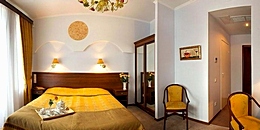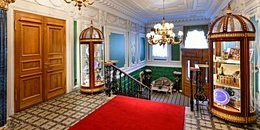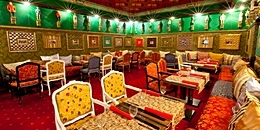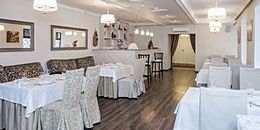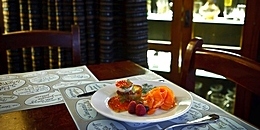6th and 7th Lines of Vasilevsky Island
6th and 7th Lines is one of the most interesting and picturesque streets of Vasilevskiy Island and is rich in sights from many different eras. This street is a good representation of one of the island's quirky characteristics - the two lines were originally planned to be the opposite embankments of a single canal. 7th Line is the east side of the street and 6th Line is the west. The channel was never built, but the names remained. The pedestrian part of the street between Bolshoy Prospekt and Sredny Propsekt is very popular with locals and visitors alike.
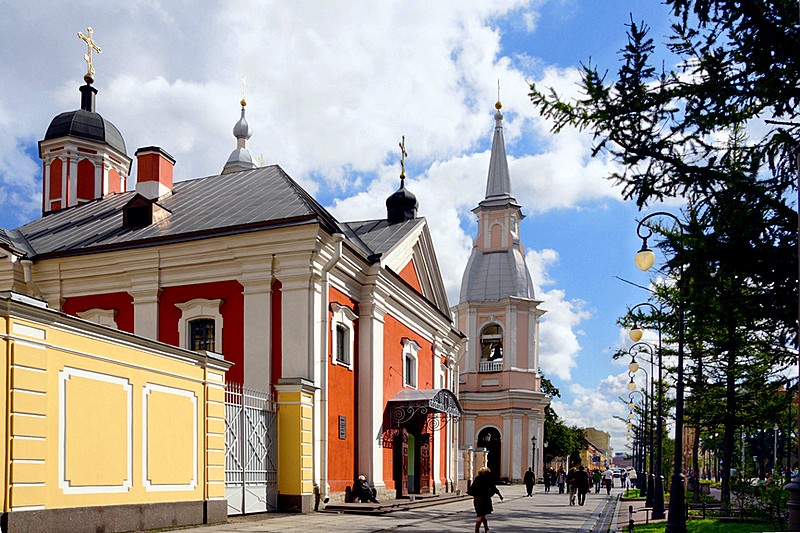
The history of the 6th and 7th lines of Vasilievsky Island began in the 1720s, when the two-story metochion (mission) of the Alexander Nevsky Monastery (No. 12) was built close to the Neva River by Jean-Baptiste Le Blond. Around the same time, the Troekurov House (No. 13) was built by Nikolay Myasoedov- an example of the "template" houses of the first third of the 18th century, built for a stolnik or page of Peter the Great. In 1729-1732, the first Cathedral of St. Andrew was built in wood at the intersection of the street with the Bolshoy Prospekt. To accommodate worshipers during Petersburg's harsh winters, it was decided to build a church in stone nearby. It took twenty years to construct the Church of Three Saints - one of the oldest surviving churches in St. Petersburg. Subsequently, the church was given to the Georgian diaspora and it was here that worship in the Georgian language sounded for the first time in St. Petersburg.
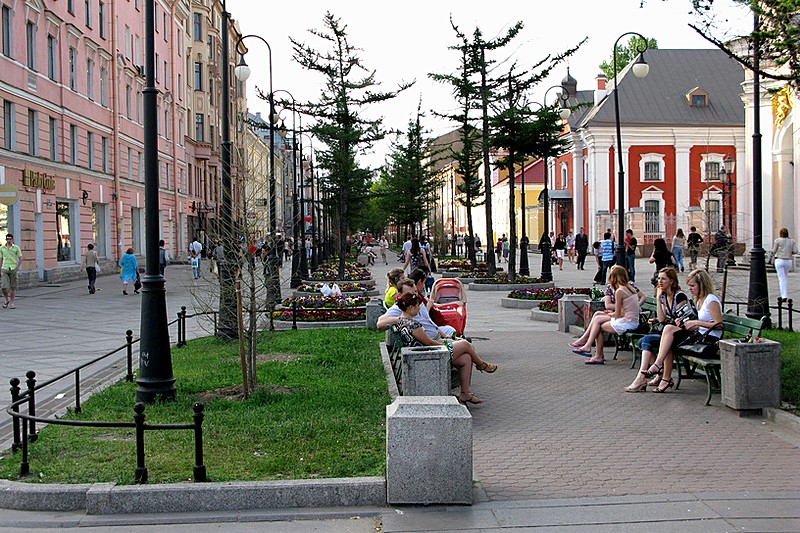
After the original cathedral burned from a lightning strike in 1761, it was decided to rebuild the Cathedral of St. Andrew in stone also. Construction began in 1764 to designs by architect Alexander Vist. In 1764, the cuppola of the new cathedral collapsed, and Vist was arrested. The cathedral and bell tower were eventually completed in 1781. Today the cathedral has been restored, and an obelisk in honor of the Order of St. Andrew stands nearby. Another church on the 6th and 7th Lines was built by an unknown architect near Maly Prospekt in 1750. The Church of the Annunciation of the Blessed Virgin Mary is unique in that it has the largest number of altars of all the churches of St. Petersburg - seven. It also has a three-tiered, 52-meter bell tower making it the highest on Vasilevsky Island.
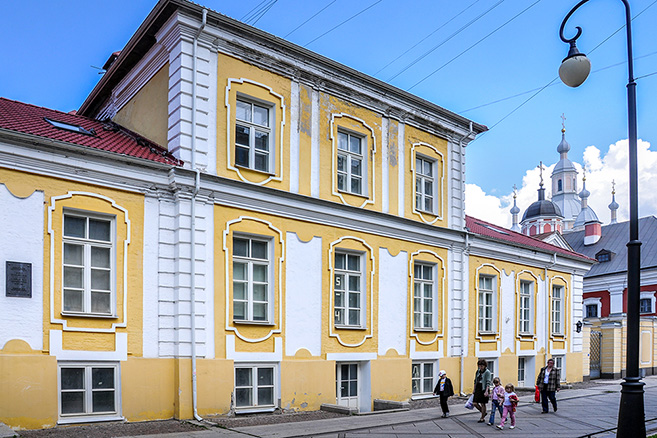
Other monuments of note are the Larinsky School (No. 15), one of the first schools in St. Petersburg, which moved to this site in 1794; the Andreevskaya Market (No. 9), built in the second half of 18th century and one of the first gostiny dvors (markets for travelling merchants) in St. Petersburg; and the Art Nouveau Meltzer House (No. 37), built by the owner, Ernest Meltzer. The Pharmacy of Dr. Pel (No. 16-18) is of greater interest. It was built in the 1900s and now has a Pharmacy Museum. In the courtyard one can see the round tower where, according to an urban legend, Alexander Pel conducted alchemical experiments and bred griffins. In 1994, the "Tower of Griffins" was painted by artists and became a monument of the St. Petersburg underground.
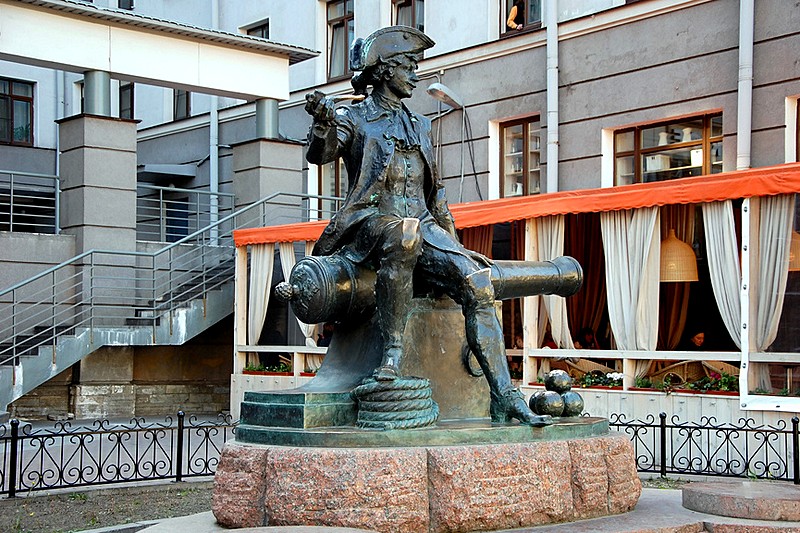
The history of the street is closely connected with the history of horse-drawn railways or "konki". In 1863, one of the first passenger lines was launched runnign from Admiralteyskaya Ploschad via Konnogvardeisky Prospekt to the 6th Line. There is a monument to this type of tram, used from 1872-1878, at the intersection with Sredny Prospekt. It consists of a wagon, a bronze horse, and driver. After the monument, the pedestrian area known as Andreevsky Boulevard begins. Here, apart from a large number of shops and cafes, is a monument to military engineer Vasily Korchmin. There are many legends of how Vasilievsky Island received its name, and the idea that the name came from Korchmin, Peter the Great's friend and artillery engineer, is one of the most popular. It is highly recommended to take a stroll in the pedestrian area, which is particularly convenient as it is next to Vasileostrovskaya Metro Station.
| Metro stations: | Vasileostrovskaya |
|---|---|
| Directions: | Exit Vasileostrovskaya Metro Station and turn right onto 6th and 7th Lines. |
| Best walking route: | Almost the whole street from the Lieutenant Schmidt Embankment to Maly Prospekt (approximately 1.5 hours) |
| What's here? | Andreevskaya Market, St. Andrew's Cathedral, Church of Three Saints, Troekurov House, Church of the Annunciation, Larinsky School, Pharmacy of Dr. Pel, Monument to the horse-tram, Monument to Vasily Korchmin |
| What's nearby? | Naberezhnaya Reki Smolenki (Smolenka Embankment), Maly Prospekt VO, Sredny Prospekt, Bolshoy prospekt VO, Bolshaya Neva |

